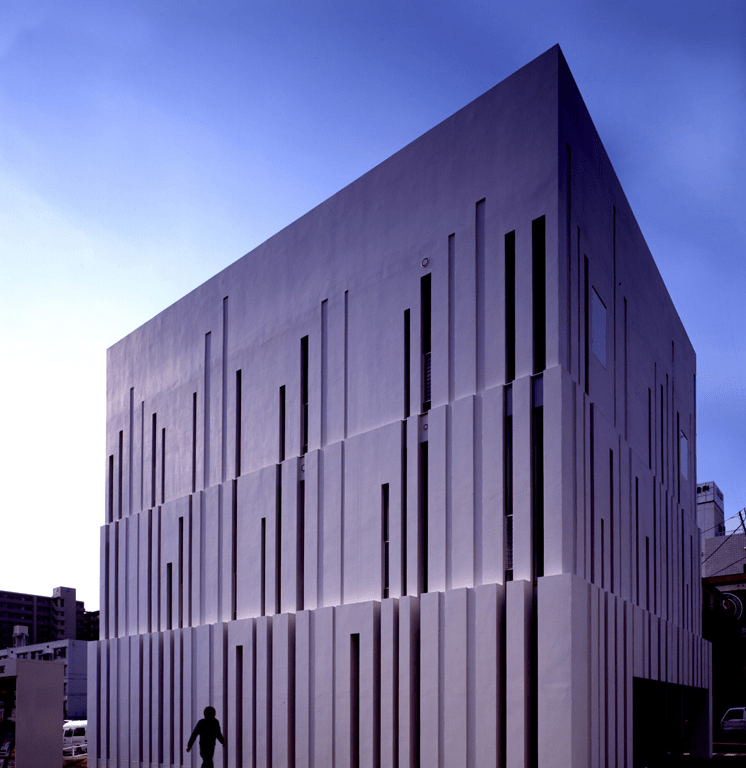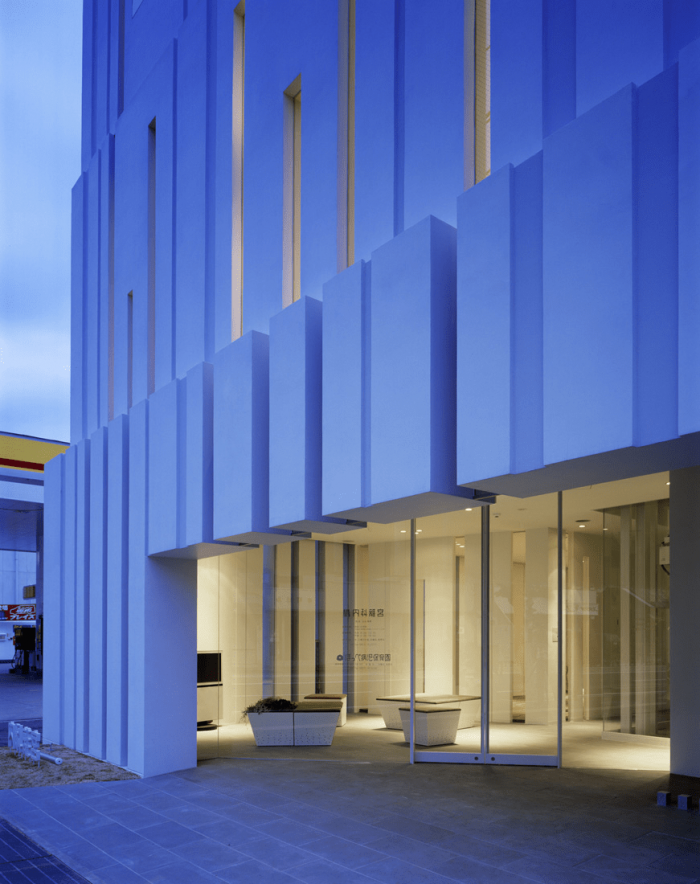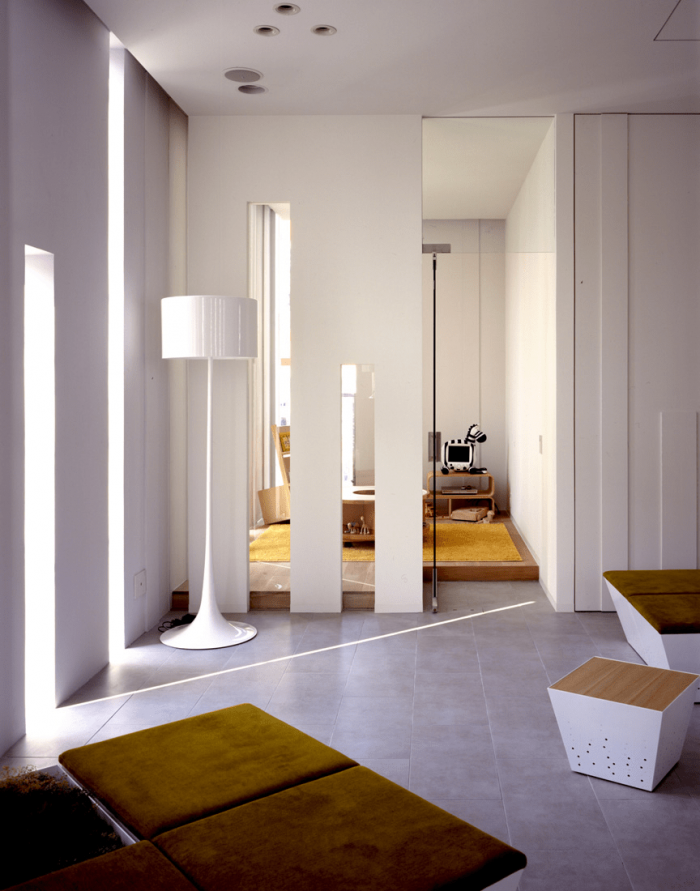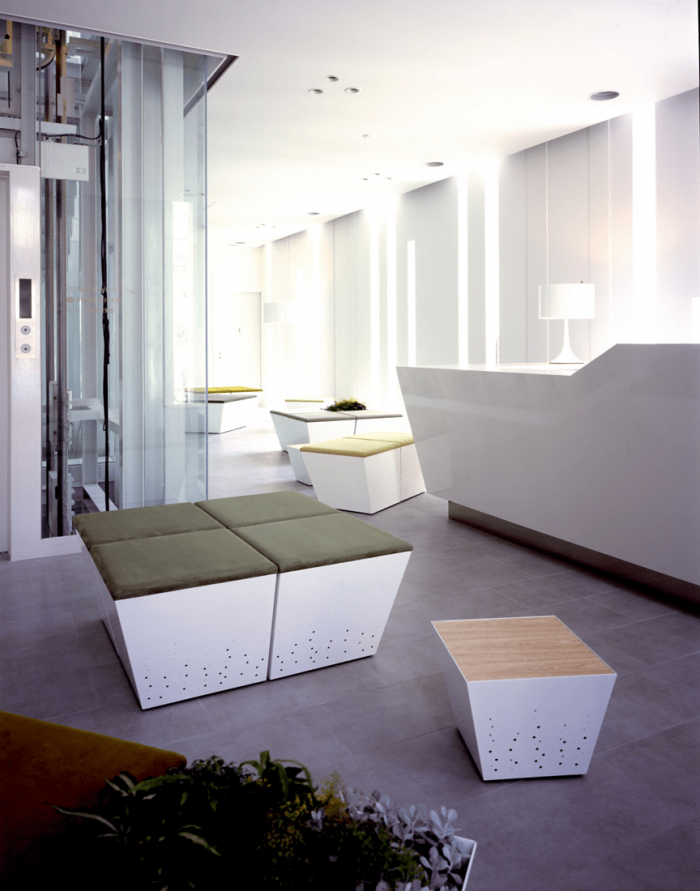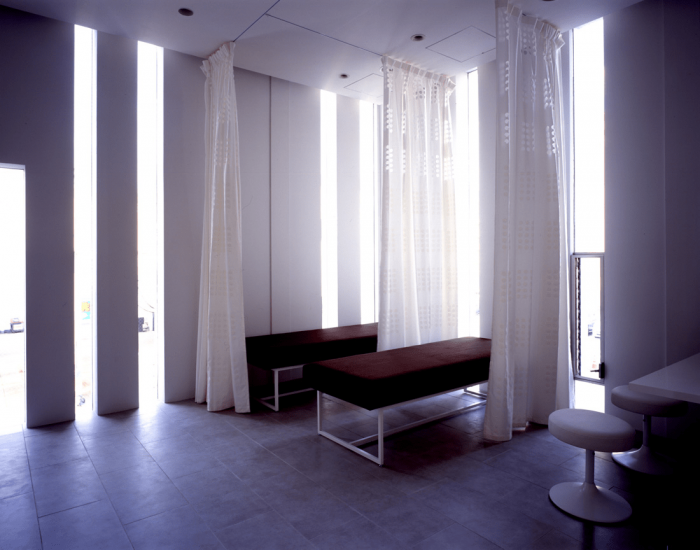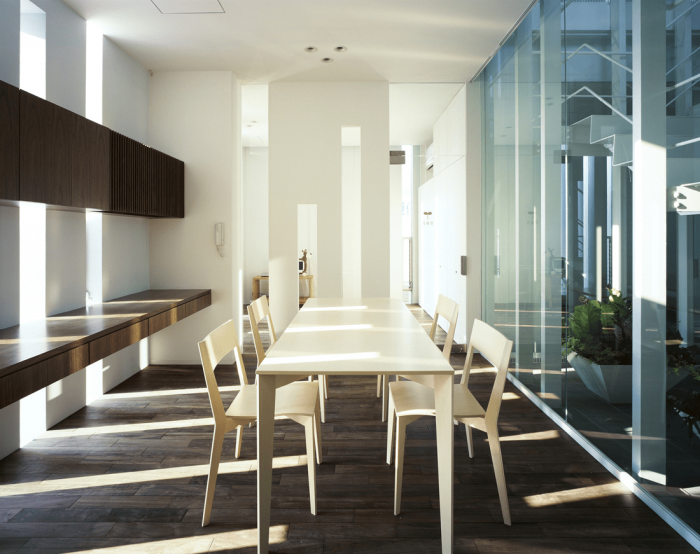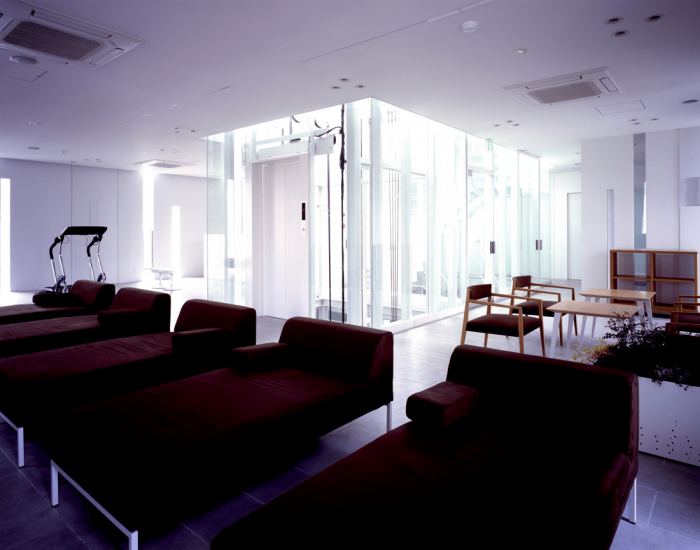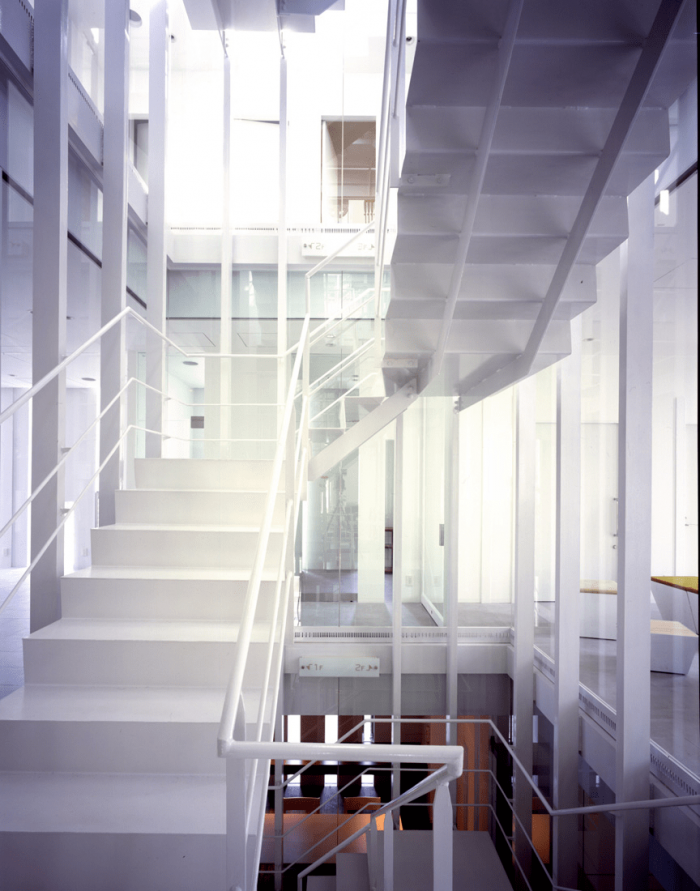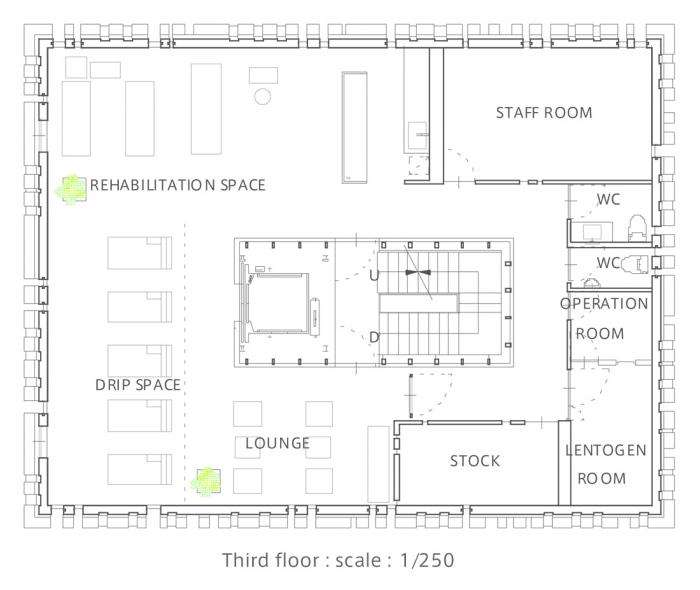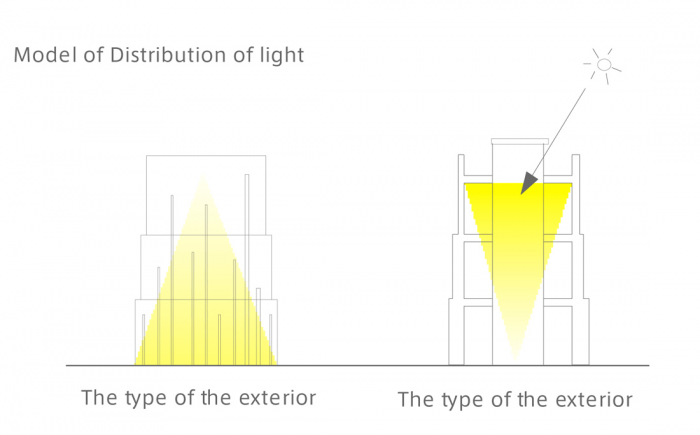在这个项目中,我们想看看在诊所的功能限制中我们能做什么。
我们不想把通常用于移动的地方,如电梯井或楼梯井关闭,而是想把它们打开来收集光线,用它们作为光井来维持从上面进来的照明。当光线向下穿过采光井时,外部条形图一样的开孔维持着低层的照明,并逐渐向高层减少。这种照明设计,利用建筑内部和外部之间的正负关系,使每层的均匀照明成为可能。
With this project we wanted to see what we could do amidst the functional constraints of a clinic.
Instead of keeping places normally used for movement such as an elevator shaft or stair wells closed, we wanted to open them up to collect light, using them as lightwells to maintain the lighting coming- in from above. As light travels downward through the lightwells, exterior bar- graph- like apertures- maintain lighting on the lower levels, and gradually decrease in number towards the upper levels.This- lighting design,using the building’s positive-negative relationship between interior and exterior,makes- uniform lighting on each floor possible.
此外,就像传统的日本格子门一样,结构完整的墙壁和孔洞的位置使建筑内部很难从外面看到,同时又能从内部清晰地看到外面,使每层的功能和理想的隐私水平得以实现。
Furthermore, much like a traditional Japanese lattice door, the placement of the structurally integral- walls and apertures makes the inside of the building difficult to see from the outside, while preserving- a clear view of the outside from within, allowing for both functionality and an ideal level of privacy on- each floor.
通过重新考虑已经到位的建筑元素,如形状、走廊和楼梯间以及照明,我们认为我们已经为诊所创造了一个新的和高度功能性的标准,不是通过一个大型的操作,而是一个非常适度的操作。
By reconsidering the already in place elements of the construction,such as shape,hallways and stairwells, and lighting,we think we have created a new and highly functional standard for clinics, not through a- large operation but a very modest one.
在未来,我们希望继续思考新的基本要素,虽然是新的,但仍然是熟悉的。
In the future we want to continue to think of new basics, that while new are still familiar.
Architects: Suppose Design Office
Area : 228 m²
Photographs :Toshiyuki Yano from Nacasa&Partners Inc.
City:KURE-SHI
Country:Japan

